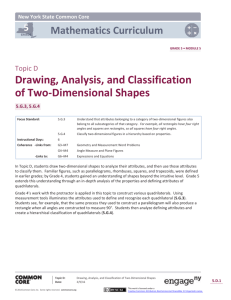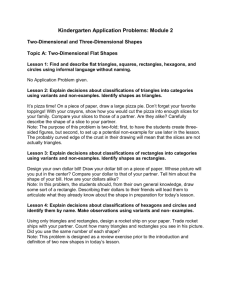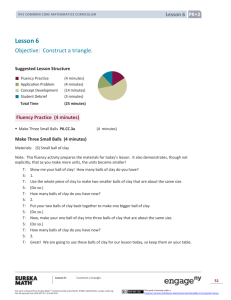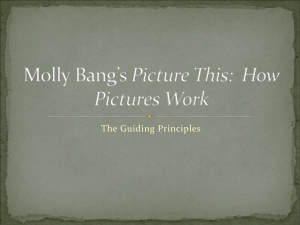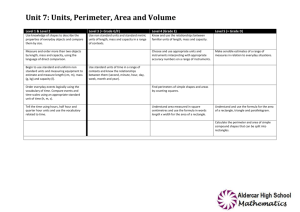Prekindergarten Mathematics Module 2, Topic B
advertisement
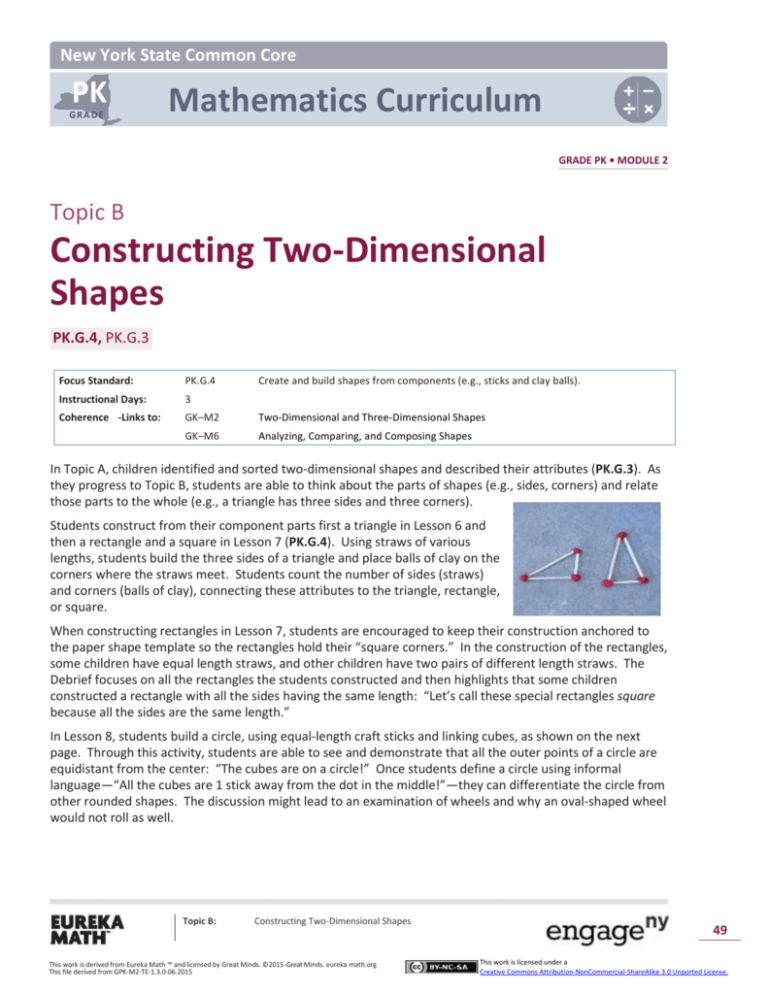
New York State Common Core PK KK GRADE Mathematics Curriculum GRADE PK • MODULE 2 Topic B Constructing Two-Dimensional Shapes PK.G.4, PK.G.3 Focus Standard: PK.G.4 Create and build shapes from components (e.g., sticks and clay balls). Instructional Days: 3 Coherence -Links to: GK–M2 Two-Dimensional and Three-Dimensional Shapes GK–M6 Analyzing, Comparing, and Composing Shapes In Topic A, children identified and sorted two-dimensional shapes and described their attributes (PK.G.3). As they progress to Topic B, students are able to think about the parts of shapes (e.g., sides, corners) and relate those parts to the whole (e.g., a triangle has three sides and three corners). Students construct from their component parts first a triangle in Lesson 6 and then a rectangle and a square in Lesson 7 (PK.G.4). Using straws of various lengths, students build the three sides of a triangle and place balls of clay on the corners where the straws meet. Students count the number of sides (straws) and corners (balls of clay), connecting these attributes to the triangle, rectangle, or square. When constructing rectangles in Lesson 7, students are encouraged to keep their construction anchored to the paper shape template so the rectangles hold their “square corners.” In the construction of the rectangles, some children have equal length straws, and other children have two pairs of different length straws. The Debrief focuses on all the rectangles the students constructed and then highlights that some children constructed a rectangle with all the sides having the same length: “Let’s call these special rectangles square because all the sides are the same length.” In Lesson 8, students build a circle, using equal-length craft sticks and linking cubes, as shown on the next page. Through this activity, students are able to see and demonstrate that all the outer points of a circle are equidistant from the center: “The cubes are on a circle!” Once students define a circle using informal language—“All the cubes are 1 stick away from the dot in the middle!”—they can differentiate the circle from other rounded shapes. The discussion might lead to an examination of wheels and why an oval-shaped wheel would not roll as well. Topic B: Constructing Two-Dimensional Shapes This work is derived from Eureka Math ™ and licensed by Great Minds. ©2015 -Great Minds. eureka math.org This file derived from GPK-M2-TE-1.3.0-06.2015 49 This work is licensed under a Creative Commons Attribution-NonCommercial-ShareAlike 3.0 Unported License. Topic B PK 2 NYS COMMON CORE MATHEMATICS CURRICULUM In Topic B Fluency Practice, students make small balls of clay in preparation for shape construction activities in the Concept Development. Students are asked to use 1 ball of clay to make 2, 3, 4, or 5 balls that are about the same size. They may notice that as they decompose 1 ball of clay into 3 balls of clay, each ball becomes smaller. A Teaching Sequence Toward Mastery of Constructing Two-Dimensional Shapes Objective 1: Construct a triangle. (Lesson 6) Objective 2: Construct a rectangle and a square. (Lesson 7) Objective 3: Construct a circle. (Lesson 8) Topic B: Constructing Two-Dimensional Shapes This work is derived from Eureka Math ™ and licensed by Great Minds. ©2015 -Great Minds. eureka math.org This file derived from GPK-M2-TE-1.3.0-06.2015 50 This work is licensed under a Creative Commons Attribution-NonCommercial-ShareAlike 3.0 Unported License.

